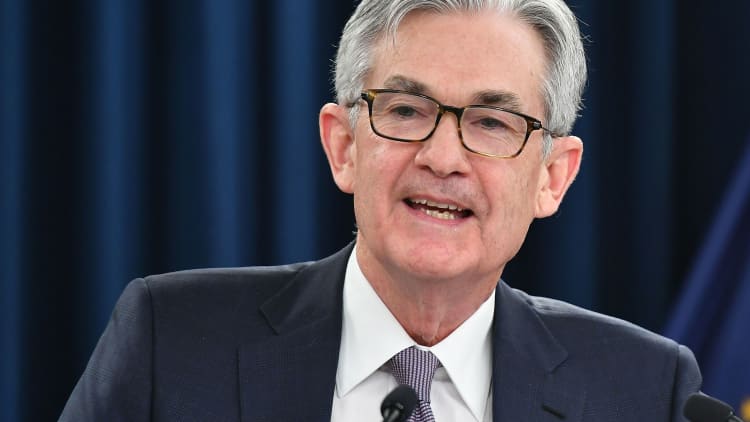The Federal Reserve's forecast of a slowly recovering economy and its commitment to heavy asset purchases and zero interest rates was a somber message for markets that sent buyers into bonds as the dollar weakened.
The Fed's message did not really contain surprises, but it showed a commitment to long-term easing with a forecast that it expects interest rates to remain at zero through 2022. By the end of 2022, it also expects unemployment to reach 5.5% and inflation to reach 1.7%, below its target 2%.
"This is saying the Fed will be failing to meet their mandate for the next several years, at least through the end of 2022. That's why you have the median fed funds [forecast] at zero, and only two officials believe there will be an increase at the end of 2022," said Mark Cabana, head of short U.S. rate strategy at Bank of America. "It's very dovish. This is generally what we had been anticipating, but I just think it reinforces the fact this is a Fed that is going to be low for long."

Fed Chairman Jerome Powell discussed the uncertainties facing the economy and the difficulties of re-employing all of the people who were suddenly out of work when the economy locked down.
"He was more dovish than we thought he might be," said Michael Schumacher, director rates at Wells Fargo. The bond market particularly reacted to the Fed's announcement that it would continue to buy Treasurys and mortgage securities at least at the current pace of $80 billion a month, and $40 billion a month, respectively.
Schumacher said bond yields, which move opposite price, moved lower on the Fed's commitment to continue heavy purchases of bonds. The 10-year yield fell to a low of 0.73% from an early high of 0.83%.
"There weren't any new programs announced. When you think about what they've done in the last few months, I would suspect Powell and everyone else wants to step back and watch the medicine work," Schumacher said.
Stocks were mixed with the tech-heavy Nasdaq higher, closing above 10,000 for the first time. But the Dow and S&P 500 were both lower, as the reopening trade faded and bank stocks weighed heavily on the indexes. The Financial Select Sector SPDR Fund ETF XLF was down 3.6%, trading lower as Powell committed to keep rates low for a long time.
Bank profitability is hurt by low rates, and banks have been one group moving higher recently in the reopening trade. The S&P financial sector is up 12.7% in the last month.
"We're not thinking about raising rates," Powell said. "We're not even thinking about thinking about raising rates."
Powell said the Fed was considering yield curve controls but wasn't ready to proceed without more investigation. A yield curve control policy means the Fed would target interest rate levels and attempt to manage them with purchases in the Treasury market.
"The Fed doesn't need to do it now. Yields are pretty low, but if they do it when the yields are rising sharply, it will be more difficult," said Marc Chandler, chief market strategist at Bannockburn Global Forex.
Chandler said the decline in the dollar is a continuation of a trend that started March 23, the same day the stock market hit its low.
"The dollar is the opposite of risk assets. When it looks like end of days, you want to hold onto the dollar," he said. "When it's not the end of days, a rising tide lifts all boats and the dollar isn't one of the boats," said Chandler.
Powell discussed the uncertainties facing the economy because its collapse was due to a pandemic, which does not have a clear path and continues to threaten the economy.
Chandler said Powell acknowledged the positives in May's employment report, which showed a gain of 2.5 million jobs when economists expected an 8.3 million decline.
"He was saying this was good news, but we need many more months of these employment numbers," he said. "There's still a lot of uncertainty. The patient is still on life support."


